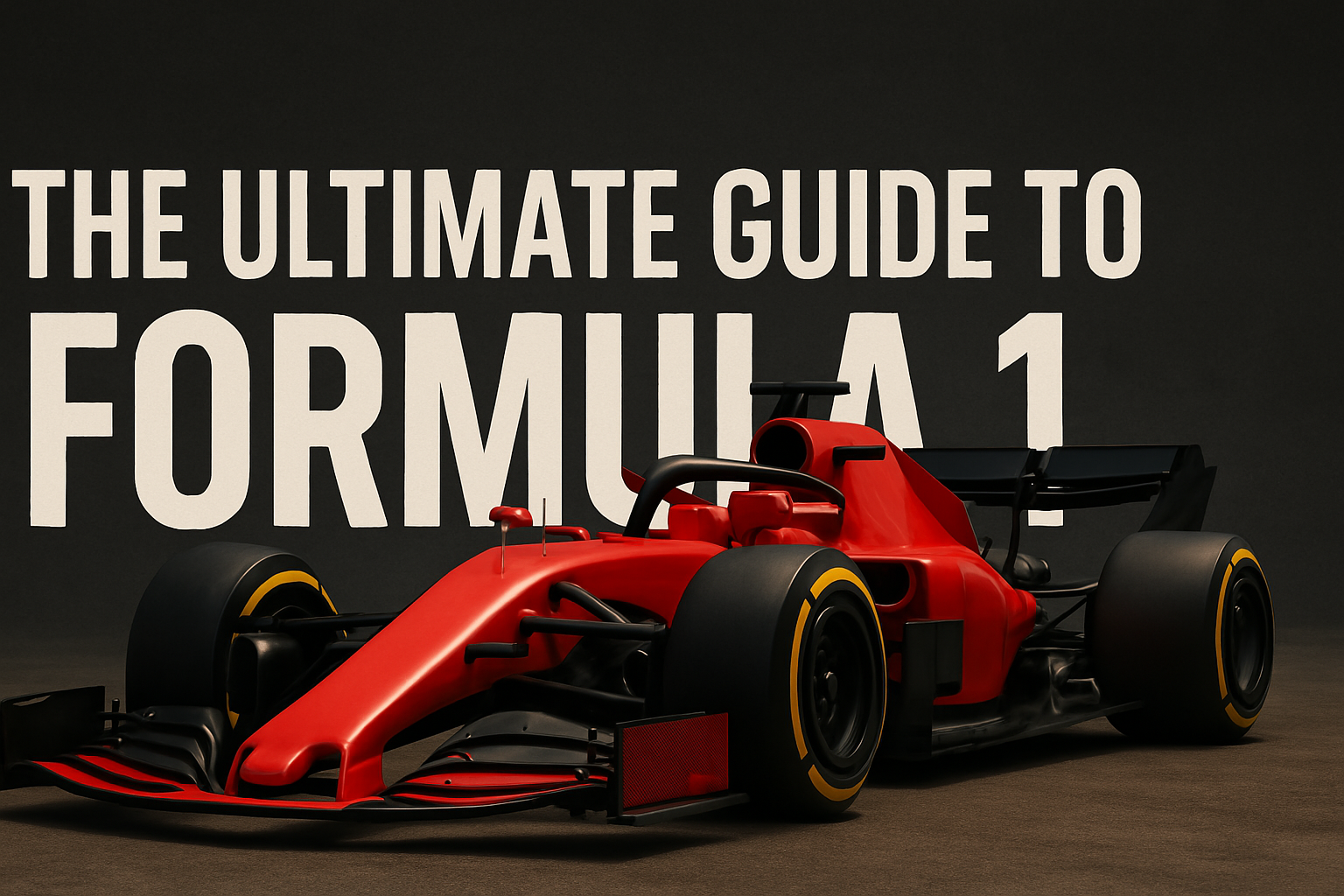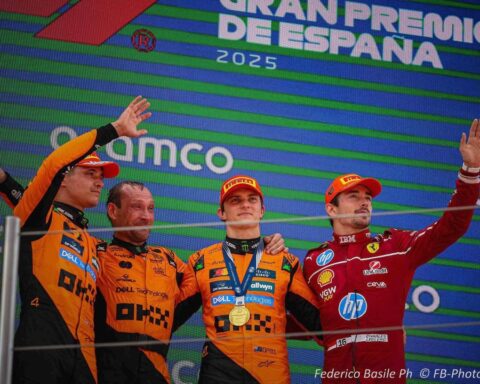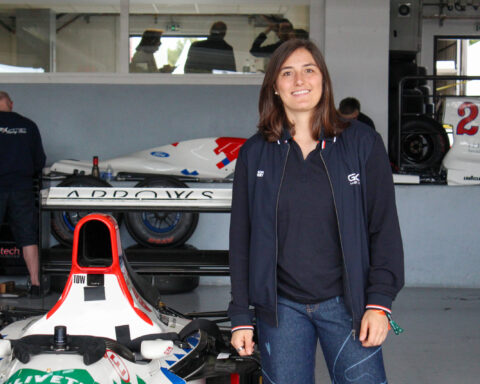In Formula 1, 10 teams compete each year with the goal of winning the championship. The 20 drivers (2 per team) are the best in the world, racing in the fastest cars, and this race is the most prestigious in the world of single-seater racing. Here’s the small TFRR guide to understanding and following a Formula 1 race, or as we call it, a Formula 1 Grand Prix (GP).

Teams and Drivers in Formula 1
In the world of Formula 1 , every year there are 24 races known as Grand Prix, 6 sprints, held in 21 different countries across 5 continents. Currently, there are ten teams, each with 2 drivers, although next year there will be 11 teams.
| Teams | Driver 1 | Driver 2 |
| McLaren | Lando Norris | Oscar Piastri |
| RedBull | Max Verstappen | Yuki Tsunoda ( Liam Lawson for the two first races) |
| Ferrari | Lewis Hamilton | Charles Leclerc |
| Mercedes | George Russell | Kimi Antonelli |
| Williams | Carlos Sainz | Alex Albon |
| Haas | Esteban Ocon | Olivier Bearman |
| Aston Martin | Lance Stroll | Fernando Alonso |
| Kick Sauber | Niko Hulkenberg | Gabriel Bortoleto |
| Racing Bulls | Isack Hadjar | Liam Lawson ( Yuki Tsunoda for the two first races) |
| Alpine | Pierre Gasly | Jack Doohan |
Points and Championships
Each team fights throughout the season to score as many points as possible. Points are awarded based on the finishing positions in a Grand Prix. Two championships are up for grabs each year: The Constructors’ Championship (the team with the most points, accumulated by both drivers, wins this title) and the Drivers’ Championship (the driver with the most points becomes World Champion). Last year, Max Verstappen from Red Bull won the Drivers’ World Championship, but it was McLaren that won the Constructors’ Championship thanks to their drivers Lando Norris and Oscar Piastri.

Here is the points table based on finishing positions :
| Ranking | Number of points scored in a GP | Number of points scored in a Sprint Race |
| 1 | 25 | 8 |
| 2 | 18 | 7 |
| 3 | 15 | 6 |
| 4 | 12 | 5 |
| 5 | 10 | 4 |
| 6 | 8 | 3 |
| 7 | 6 | 2 |
| 8 | 4 | 1 |
| 9 | 2 | 0 |
| 10 | 1 | 0 |
| 11 | 0 | 0 |
| 12 | 0 | 0 |
| 13 | 0 | 0 |
| 14 | 0 | 0 |
| 15 | 0 | 0 |
| 16 | 0 | 0 |
| 17 | 0 | 0 |
| 18 | 0 | 0 |
| 19 | 0 | 0 |
| 20 | 0 | 0 |
The sprints allow teams to earn extra points. Like a Grand Prix, points are awarded based on the rankings.
Grand Prix and Sprints
However, what distinguishes a Grand Prix from a sprint race are the rules. Here are the main differences between a Grand Prix and a sprint race:
| Differences | Sprint Race | Grand Prix |
| KM | About 100 km | About 300 km |
| Time | 30 min | 1h30 / 2h |
| Mandatory Pit Stop | 0 | Depend of the race 1 or 2 |
Formula 1 Race Weekend Schedule
Additionally, weekends are structured differently when there is a sprint race.
| Sprint Races | Grand Prix | |
| Friday | Free Practice 1 / Sprint Race Qualification | Free Practice 1 / Free Practice 2 |
| Saturday | Sprint Race / GP Qualification | Free Practice 3 / GP Qualification |
| Sunday | GP | GP |
During Free Practices, teams and drivers can test the car, make repairs, or conduct other tests. Qualifying takes place in 3 stages: Q1, Q2, and Q3. In each stage, drivers complete laps with one goal in mind: to be as fast as possible. Here, there is no need to block or defend your position; the only thing that matters is speed. At the end of Q1, the 5 drivers with the lowest times are eliminated and will start the race in the positions they finished in Q1. At the end of Q2, 5 more drivers are eliminated, from 15th to 10th place, based on their times. Finally, the top 10 drivers go head-to-head one last time to set the starting grid for the race.

Single-Seaters and Their Specifications
Formula 1 races take place in single-seater cars. These cars have very specific characteristics and must meet certain standards. The tires are 18 inches, and each car is equipped with a V6 turbocharged engine that revs up to 15,000 rpm, equipped with a kinetic and thermal energy recovery system. This entire system is called the Power Unit. Currently, the single-seaters run on E10 fuel. The Power Unit consists of:
- An Internal Combustion Engine (ICE)
- A Turbocharger
- A Motor Generator Unit-Heat (MGU-H)
- An Energy Storage (ES)
- A Motor Generator Unit-Kinetic (MGU-K)
- An Exhaust System
- Control Electronics (CE)
During a season (with 24 races and 6 sprints), a car can only replace parts of its power unit a certain number of times, or it will incur penalties in the overall race standings.

Parts Replacement and Penalties
Teams can only change the following parts a limited number of times:
- 4 times for the ICE, MGU-M, MGU-K, and turbocharger
- 2 times for the energy reserve and the CE
- No more than 8 times for components of the exhaust system.
Formula 1 Flags and Their Meaning
To fully understand how a race unfolds, it is essential to understand the flags:
| Checkered Flag | End of the race / of the practice or qualifying session |
| Blue Flag | A driver is being passed by another driver who is a lap ahead and needs to facilitate the passing to let them through safely |
| White Flag | Technical problem during the race or contestant ahead slower |
| Yellow Flag | Danger ahead, debris or something else obstructing the track. Forbidden for drivers to pass and absolute necessity to slow down. A double yellow flag means that the pilots need to significantly slow down and anticipate to stop |
| Red Flag | Mandatory stop for all pilots temporarily or indefinitely |
| Green Flag | The race starts back again |
| Black and White Flag | A diagonal black and white flag means a pilot is manifesting unsafe driving against an opponent and/or is showing anti-sportsmanship behavior |
| Black Flag | The pilot is excluded and needs to evacuate the track immediately |
| Red and Yellow Lined Flag | In a static position, it indicates an adherence change on the track caused by excess oil or water in case of bad weather |
| Black with Red Disc Flag | Used to signal a pilot that their car is too damaged to keep racing and they need to go back to their box for their own safety |
Finally, be careful not to confuse F1 and FIA. F1 is the racing league, while the FIA is the International Automobile Federation, which governs and imposes the rules for F1 and other racing series.






